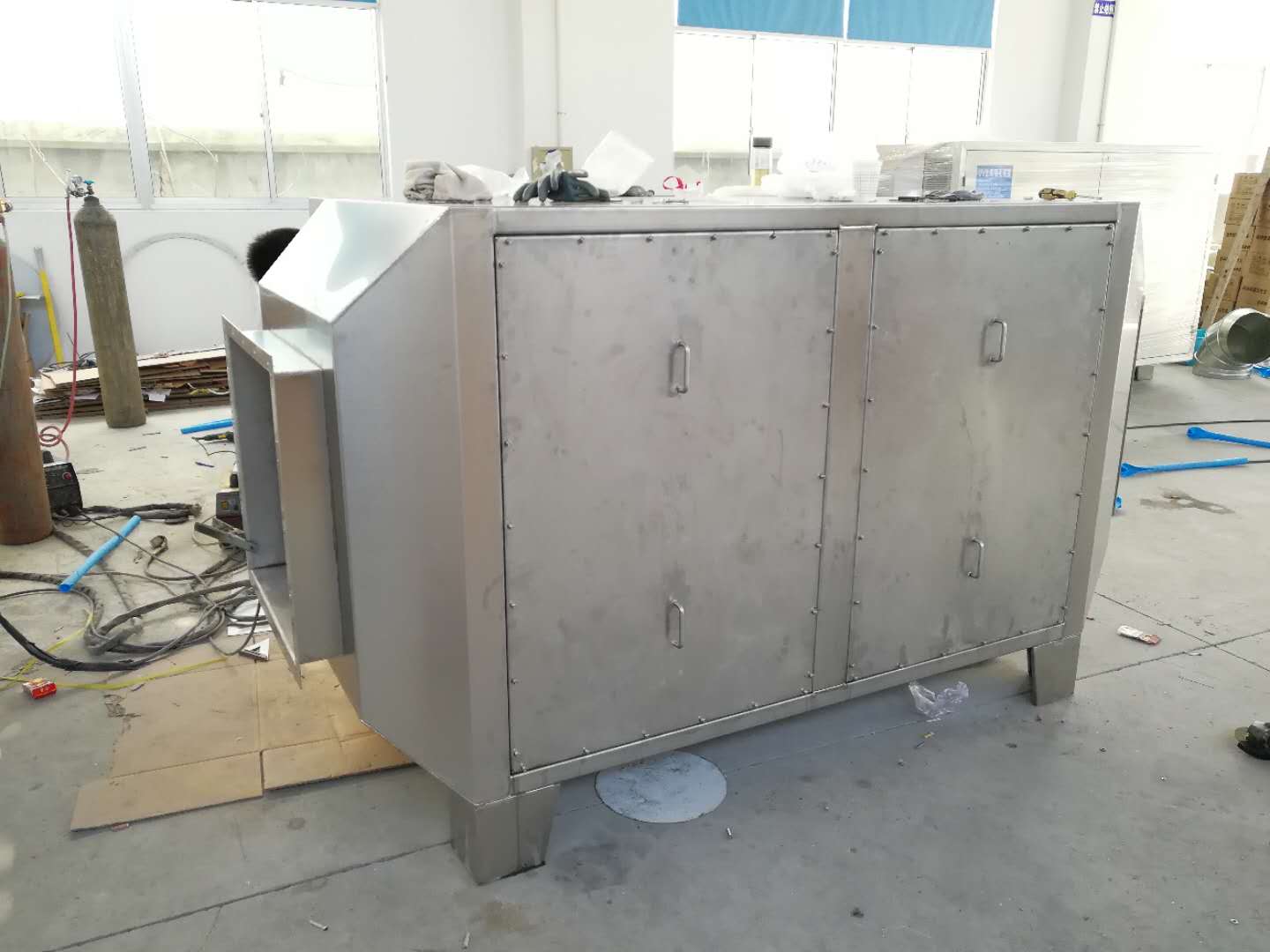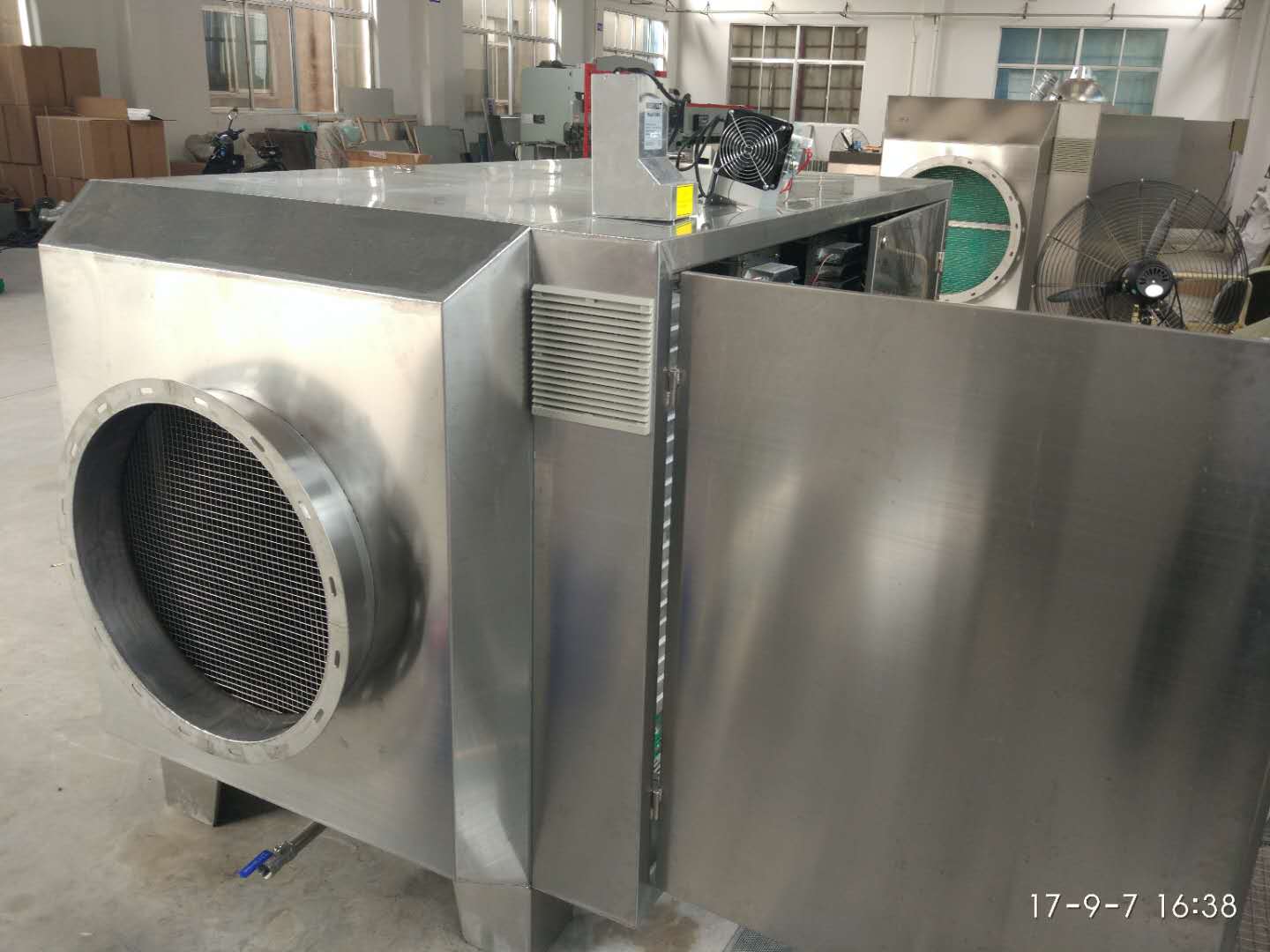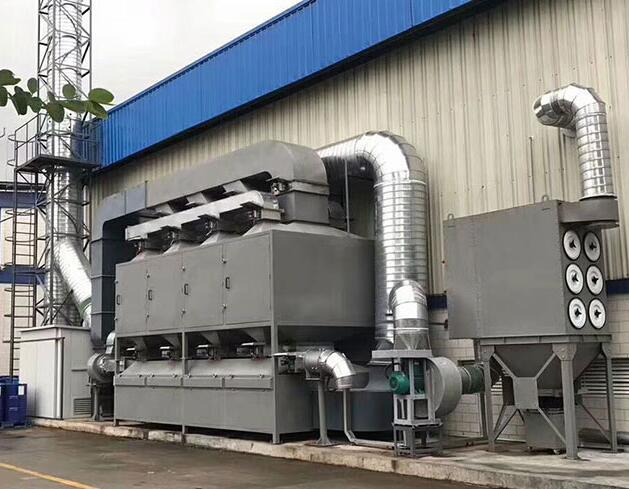I. Major sources of waste gas from sewage treatment plants
Industrial production, municipal sewage, sludge treatment and garbage disposal facilities are the main sources of odorous gases. Stench gas mainly occurs in sewage pumping station, intake grille, gas settling tank and primary settling tank in the process of sewage treatment.
In addition, there are sludge concentration, dehydration, drying, transportation, composting, landfill, incineration, transportation and other places in the process of sludge treatment, as well as the corresponding sources of chemical pharmaceuticals, rubber plastics, paint, printing and dyeing leather, livestock breeding and fermentation pharmaceuticals.
II. Major Components of Wastewater Plant Exhaust Gas
Different treatment facilities and processes can produce various odorous gases. Hydrogen sulfide is the main odor in the inlet pump house of sewage treatment plant. Hydrogen sulfide and other sulfur-containing gases are the main odors in the anaerobic digestion process of sludge in primary sedimentation tank. Ammonia and other volatile substances will be produced in the process of sludge digestion and stabilization.
Ammonia, amines, sulfides, fatty acids, aromatics and dimethyl sulfur will be produced in the composting process of garbage. Good oxidation and sludge drying process may produce a small amount of hydrogen sulfide, but mainly mercaptan and dimethyl sulfur gas.
Ammonia, amines, sulfides, fatty acids, aromatics and dimethyl sulfur will be produced in the composting process of garbage. Good oxidation and sludge drying process may produce a small amount of hydrogen sulfide, but mainly mercaptan and dimethyl sulfur gas.
III. Main hazards of waste gas from sewage treatment plants
Odorous substances come from a wide range of sources, which can cause different degrees of toxicity to human respiratory, digestive, cardiovascular, endocrine and nervous system. Aromatic compounds such as benzene, toluene, styrene can also cause human body distortion and canceration.
IV. Waste Gas Treatment Technologies in Sewage Plants
Water Spray + Photooxygen
Working Principle of Water Spraying
Working Principle of Water Spraying
Water spray scrubbing tower belongs to two-phase reverse flow packed absorption tower. The gas enters the purification tower tangentially from the inlet under the tower body. Under the negative pressure of the fan, it fills the space of the intake section rapidly, and then rises evenly through the equalizing section to the first packing absorption section. On the surface of the filler, the pollutants in the gas phase react with the substances in the liquid phase. The reaction product oil (mostly soluble salts) flows into the lower tank with the absorbent. The incompletely absorbed gas continues to rise into the first stage of spray. In the spray section, the absorbent liquid is ejected from the uniformly distributed nozzle at high speed, forming numerous fine droplets which are fully mixed with the gas, contacted, and continue to undergo chemical reactions.
Then the gas rises to the second packing section and the spray section for the absorption process similar to the first one. The density of the second stage nozzle is different from that of the first stage nozzle, the injection pressure is different, and the concentration range of the absorbed gas is also different. The process of contact between spray and filler is also the process of heat and mass transfer. The process is fully and stably guaranteed by controlling the empty column velocity and the lag time. For some gases with poor chemical activity, a certain amount of surfactant should be added into the absorption solution. The upper part of the tower body is the dewatering and defogging section, where the absorbed liquid droplets entrapped in the gas are removed. After preliminary treatment, the gas from the upper exhaust pipe of the absorption tower enters the photocatalytic equipment of the next stage treatment equipment.
Operating Principle of Photo-Oxygen Catalytic Equipment
Special UV Ultraviolet Lamp: Use special high energy and high ozone ultraviolet ray beam to irradiate waste gas, crack industrial waste gas such as ammonia, trimethylamine, hydrogen sulfide, methyl thiol, methyl thioether, butyl acetate, ethyl acetate, dimethyl disulfide, carbon disulfide and styrene, sulfide H2S, VOC, molecular chain structure of benzene, toluene and xylene, make organic or inorganic polymer stink. Molecular chains of compounds are degraded into low molecular compounds, such as CO 2, H 2 and so on, under the irradiation of high-energy ultraviolet light. High-energy and high-ozone ultraviolet (UV) beams are used to decompose oxygen molecules in the air to produce free oxygen, i.e. reactive oxygen species. Ozone is produced by combining oxygen molecules with oxygen molecules because of the unbalanced positron and negative electrons carried by free oxygen. UV+O 2_O-+O*(active oxygen)O+O 2_O 3(ozone). It is well known that ozone has a strong oxidizing effect on organic matter, and has an immediate effect on the removal of industrial exhaust gas and other irritating odors. After the industrial exhaust gas is input into the purification equipment by exhaust equipment, the purification equipment uses high-energy UV ultraviolet ray beam and ozone to decompose and oxidize the industrial exhaust gas synergistically, so that the industrial exhaust gas can be degraded into low molecular compound, water and carbon dioxide, and then discharged outdoors through the exhaust duct.
Using high energy-C beam to crack the molecular bonds of bacteria in industrial exhaust gas, destroy the nucleic acid (DNA) of bacteria, and then oxidize through ozone to completely purify and kill bacteria. Considering the efficiency of purifying air, we choose the principle of combining ultraviolet radiation in-C band with ozone generation and corona current enhancement device, which combines pulse corona radiosorption technology to treat harmful gases. Ultraviolet radiation in - C band is mainly used to remove the decomposition and fission of hydrogen sulfide, ammonia, benzene, toluene, xylene, formaldehyde, ethyl acetate, ethane, acetone, urea, resin and other gases, so as to transform organic matter into inorganic compounds.
Specialized catalyst: More than 27 kinds of inert catalysts are allocated according to different components of waste gas. The catalyst uses honeycomb metal mesh as carrier, contacts with light source in all directions. The inert catalyst reacts with light source under 338 nanometer light source, enlarges the effect of light source by 10-30 times, makes it react fully with waste gas, shortens the contact time between waste gas and light source, and improves the contact time between waste gas and light source. The purifying efficiency of the catalyst is similar to that of plant photosynthesis, which can purify the exhaust gas.
1. Photooxygen Catalytic Equipment + Fan
2. Low temperature plasma equipment + fan
Then the gas rises to the second packing section and the spray section for the absorption process similar to the first one. The density of the second stage nozzle is different from that of the first stage nozzle, the injection pressure is different, and the concentration range of the absorbed gas is also different. The process of contact between spray and filler is also the process of heat and mass transfer. The process is fully and stably guaranteed by controlling the empty column velocity and the lag time. For some gases with poor chemical activity, a certain amount of surfactant should be added into the absorption solution. The upper part of the tower body is the dewatering and defogging section, where the absorbed liquid droplets entrapped in the gas are removed. After preliminary treatment, the gas from the upper exhaust pipe of the absorption tower enters the photocatalytic equipment of the next stage treatment equipment.
Operating Principle of Photo-Oxygen Catalytic Equipment
Special UV Ultraviolet Lamp: Use special high energy and high ozone ultraviolet ray beam to irradiate waste gas, crack industrial waste gas such as ammonia, trimethylamine, hydrogen sulfide, methyl thiol, methyl thioether, butyl acetate, ethyl acetate, dimethyl disulfide, carbon disulfide and styrene, sulfide H2S, VOC, molecular chain structure of benzene, toluene and xylene, make organic or inorganic polymer stink. Molecular chains of compounds are degraded into low molecular compounds, such as CO 2, H 2 and so on, under the irradiation of high-energy ultraviolet light. High-energy and high-ozone ultraviolet (UV) beams are used to decompose oxygen molecules in the air to produce free oxygen, i.e. reactive oxygen species. Ozone is produced by combining oxygen molecules with oxygen molecules because of the unbalanced positron and negative electrons carried by free oxygen. UV+O 2_O-+O*(active oxygen)O+O 2_O 3(ozone). It is well known that ozone has a strong oxidizing effect on organic matter, and has an immediate effect on the removal of industrial exhaust gas and other irritating odors. After the industrial exhaust gas is input into the purification equipment by exhaust equipment, the purification equipment uses high-energy UV ultraviolet ray beam and ozone to decompose and oxidize the industrial exhaust gas synergistically, so that the industrial exhaust gas can be degraded into low molecular compound, water and carbon dioxide, and then discharged outdoors through the exhaust duct.
Using high energy-C beam to crack the molecular bonds of bacteria in industrial exhaust gas, destroy the nucleic acid (DNA) of bacteria, and then oxidize through ozone to completely purify and kill bacteria. Considering the efficiency of purifying air, we choose the principle of combining ultraviolet radiation in-C band with ozone generation and corona current enhancement device, which combines pulse corona radiosorption technology to treat harmful gases. Ultraviolet radiation in - C band is mainly used to remove the decomposition and fission of hydrogen sulfide, ammonia, benzene, toluene, xylene, formaldehyde, ethyl acetate, ethane, acetone, urea, resin and other gases, so as to transform organic matter into inorganic compounds.
Specialized catalyst: More than 27 kinds of inert catalysts are allocated according to different components of waste gas. The catalyst uses honeycomb metal mesh as carrier, contacts with light source in all directions. The inert catalyst reacts with light source under 338 nanometer light source, enlarges the effect of light source by 10-30 times, makes it react fully with waste gas, shortens the contact time between waste gas and light source, and improves the contact time between waste gas and light source. The purifying efficiency of the catalyst is similar to that of plant photosynthesis, which can purify the exhaust gas.
1. Photooxygen Catalytic Equipment + Fan
2. Low temperature plasma equipment + fan
 Huaxi EP
Huaxi EP









 Mobile access
Mobile access